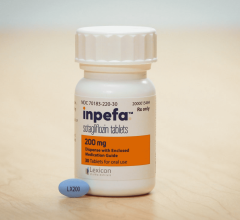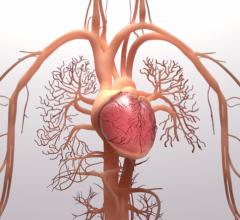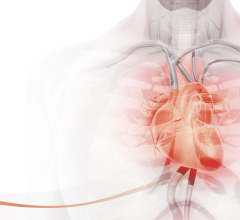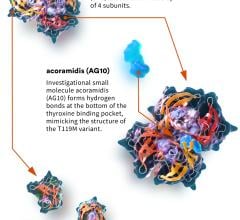August 29, 2008 - Statins, a group of drugs used to lower cholesterol levels in people with or at risk of having cardiovascular disease, should be used more frequently to combat the adverse cardiovascular outcomes from atherosclerosis, according to new research published in the September 2008 issue of the Journal of Vascular Surgery.
Atherosclerosis (hardening of the arteries) is the leading cause of death of adults worldwide and is caused when fatty substances collect in the inner lining of artery walls.
In a 10-year population-based study (from 1995 to 2005), of 343,154 elderly patients in Ontario, Canada, researchers discovered an important care gap in the management of older patients with symptomatic atherosclerosis due to the suboptimal prescription of statins. Sixty-nine percent of the patients had coronary artery disease (CAD), 34 percent had cerebrovascular disease (CVD) and 7 percent had peripheral arterial disease (PAD). About 46 percent of the patients were women, and mean patient age was 77.1 years.
The percentage of all atherosclerotic patients who were treated with statins increased from 9.8 percent to 55.3 percent. When broken down by each condition, the percentages of patients given statins were as follows: those with CAD jumped 11.8 percent to 61.2 percent; patients with CVD increased from 5.3 percent to 41.2 percent; and those with PAD rose from 6.8 percent to 43.3 percent.
"Even though the use of statin therapy in elderly patients with symptomatic atherosclerosis has increased substantially during the past decade, our study showed many patients remain untreated," said Subodh Verma, M.D., Ph.D., a cardiac surgeon at St. Michael's Hospital, University of Toronto and the Canada Research Chair in Atherosclerosis.
He added that suboptimal use was greatest among patients with PAD or CVD, or both, and lowest in patients with CAD.
Given the heightened risk of cardiovascular adverse outcomes in patients with atherosclerosis, researchers believe their results have important and immediate implications. "This was especially evident in patients with CVD and PAD with data from January to March in 2004, that indicated that less than 50 percent of these patients were on statins," said Dr. Verma.
Strong evidence supports the management of atherosclerosis with statins, according to Dr. Verma. He pointed to a recent study involving more than 90,000 participants that indicated for every slight reduction (1 millimole per litre) in low-density lipoprotein (LDL) cholesterol, there was also reduction of about 23 percent in the risk of heart attacks or coronary-related mortality, a 24 percent reduction in the need for coronary revascularization, and a 17 percent reduction in the rate of fatal or non-fatal stroke.
Co-investigator Mohammed Al-Omran, M.D., MSc, an assistant professor in the division of vascular surgery, King Saudi University, Riyadh, Saudi Arabia and a scientist at St. Michael’s Hospital, University of Toronto, noted the results of the current study support current literature and underscore the inequities in the use of risk reduction therapies for patients with PAD compared with patients with CAD.
"Our findings highlight the treatment care gaps in patients with atherosclerosis and may be useful for guiding medical interventions, focusing continuing medical education programs, encouraging active discussions on risk reduction therapies at scientific meetings, and other educational outreach programs that aim to bring physicians' practice into agreement with current guidelines for cardiovascular risk reduction,” said Dr. Al-Omran
For more information: www.jvascsurg.org, www.VascularWeb.org


 July 10, 2024
July 10, 2024 









